Medicinal plants have always played an important role in maintaining a population’s health, well-being, and everyday life worldwide. Throughout the centuries, plant leaves, stems, flowers, seeds, berries, and roots have been used to heal and maintain different pathological conditions and in beauty formulas, massage applications, food preparations, and beverages.
Ancient scholars believed herbs were the only cure for many health-related problems and diseases. Thus, they conducted an extensive study and experimented to come up with accurate conclusions about the efficacy of different medicinal herbs. Thus formulated, most drugs are free of side effects or reactions. It is the reason why herbal treatment is growing in popularity across the globe.
These medicinal herbs provide rational means for treating many internal diseases, which are otherwise considered difficult to cure. It is considered very safe to treat with medicinal plants since there are no or minimal side effects. Around the world, these plants play a critical role in developing human cultures. Furthermore, some medicinal plants are considered an essential source of nutrition for their therapeutic value.
How to grow medicinal plants at home
Aloe vera
Plants like aloe vera, commonly grown as houseplants, contain a soothing gel inside their leaves. This succulent tropical has fleshy lance-shaped leaves from a basal rosette with jagged edges. Aloe Vera is one of the known medicinal plants in the world. Aloe Vera is an excellent skin healer. Aloe Vera gel soothes skin injuries, burns, irritations, cuts, and insect bites. These plants can easily propagate from root shoots and grow well in containers. Below are the basic requirement for healthy growth of Aloe vera are:
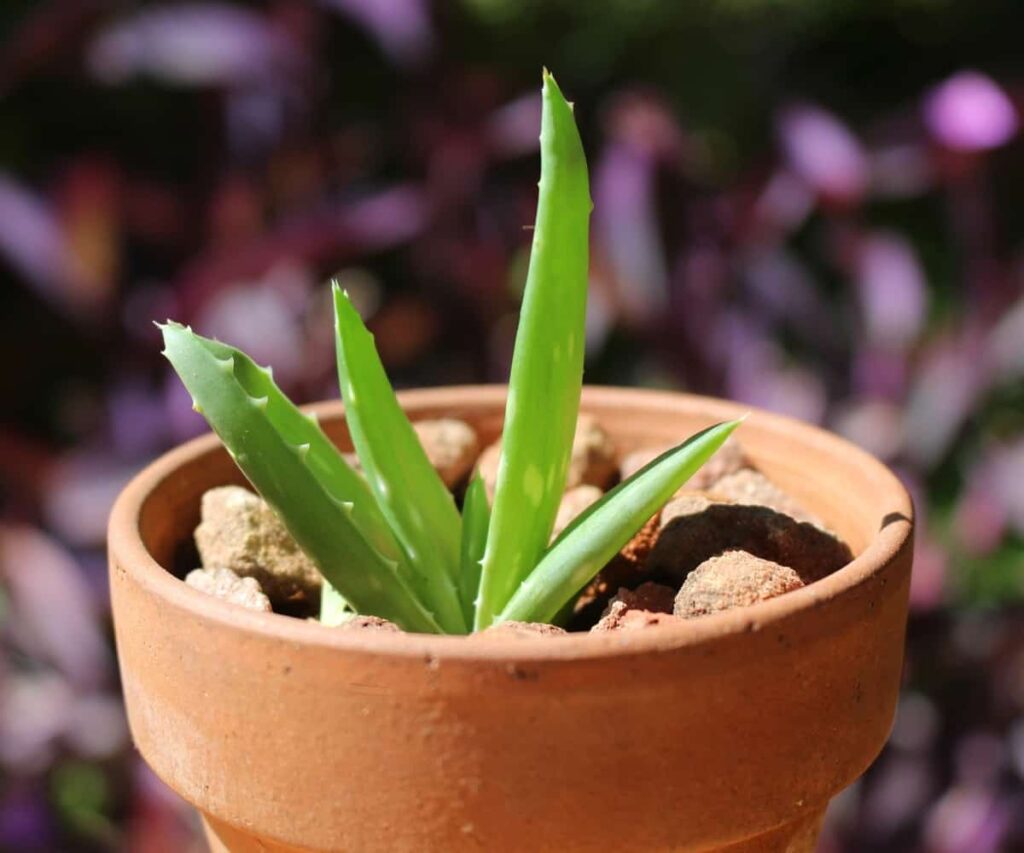
- Light: Aloe Vera thrives in bright, natural light. In the outdoors, aim for up to six hours of full sun, followed by a brief respite in the shade
- Soil: It prefers slightly acidic soil, hovering around 6.0, but it is highly adaptable and can grow on neutral or alkaline soils.
- Water: It is best to water aloe regularly if it dries completely between waterings. The leaves will pucker and shrivel if the soil is dry for a long time.
- Fertilizer:Dilute 10-40-10 houseplant fertilizer to half strength for an annual feeding. Fertilization is usually not necessary for outdoor planted aloe vera.
Lemon Grass
Tropical climates are the best places to grow lemongrass. India and Sri Lanka are their native countries. Lemongrass comes in two varieties. Domestic lemongrass and wild lemongrass are different varieties of lemongrass. Both the leaves and the oil are used to make medicine. Additionally, the oil is used as an astringent and to kill germs.
How to grow Lemon Grass from seed
Lemongrass seeds can easily be started from seed and germinate in warm, moist soil. It usually takes about 10 to 14 days for the seeds to sprout when they are pressed lightly into a sterile potting mix and kept moist. After plants reach 3 inches tall, thin them to a foot apart. Ensure the pots you keep indoors are kept in a sunny place.
A mature lemongrass plant can grow up to 5 feet tall if left unharvested. Ensure your containers are deep so your plants won’t tip over. The plants can self-propagate more readily if they are in containers at least 12 inches wide. Below are the basic requirements for the healthy growth of lemongrass,
- Light: Full-sun conditions are ideal for plants. Plant containers in a south-facing window where they can receive 6-8 hours sunlight a day when growing indoors. Supplement sunlight with indoor growing lights if necessary.
- Soil: Rich, loamy soil is ideal for lemongrass plants. When planting, compost, manure, and leaf mold can all be added as amendments to create this ideal soil.
- Water:As a drought-tolerant plant, it performs well. In addition to conserving soil moisture, three inches of mulch can enrich the soil as it breaks down.
- Fertilizer: Lemongrass is a grassy plant that needs nitrogen-rich fertilizer to grow well. The addition of trace nutrients can also be achieved by watering with manure tea.
Ajwain
The Ajwain plant, or Indian borage, is a fleshy perennial plant. Their leaves are aromatic and juicy, covered with hair-like bristles, and grow up to 1-2 feet tall. Summer through fall, the plant bears a cluster of lilac flowers at the tip. A remarkable presence in tea and meat dishes is oregano-flavored leaves and flowers. Medicinal properties of the rough-textured leaves include treating sore throats, coughs, indigestion, and stomach cramps.
In case you missed it: How to Care for Dairy Goats: Shelter/Housing, Fencing, Feeding, and Disease Control
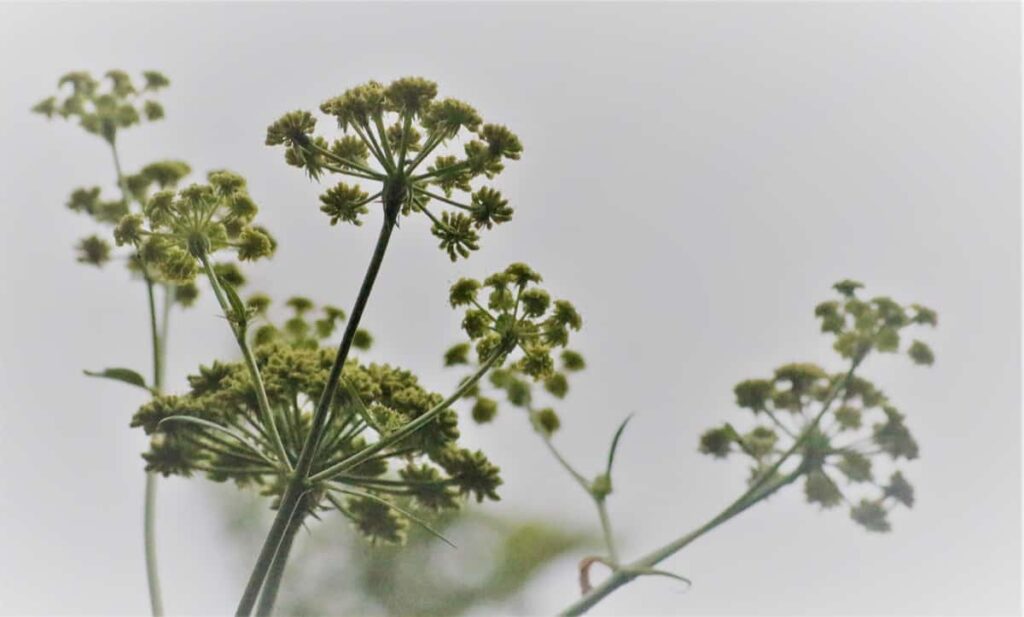
How to Ajwain from seed
Seeds should be sown in the garden with well-amended soil or containers with potting mix and misted regularly. Make sure the container is partially shaded. Within 7-10 days, the seeds will germinate. Choose a pot at least 12 inches deep and wide for planting. At least one drainage hole should be present at the bottom of the pot to drain the excess water.
- Sunlight: Shade from full sun to partial shade is ideal for ajwain plants. West-facing or south-facing windows are best for this plant indoors.
- Water: Indian borage prefers slightly moist soil but not soggy soil. Therefore, during the early morning or evening, water it.
- Soil: The Anjeer plant prefers loose, well-aerated, and well-draining soil with a pH between 6 and 8. A potting mix is best for pots. Well-rotted manure, coarse sand, and peat moss can all be used.
- Fertilizer: During springtime, when the plant is achieving fresh growth, it also benefits from regular applications of compost tea, cow dung manure, and dilute fish emulsion.
Rosemary
The rosemary plant comes in wide different varieties. Among rosemary plants, there is a type called “common” Rosemary. The primary purpose of growing common Rosemary is for culinary purposes. There is also a type of Rosemary known as “garden” rosemary. It is much harder to cultivate garden rosemary than common Rosemary since it usually grows wild. Throughout history, humans have used Rosemary for a variety of purposes.
In case you missed it: How to Grow Tomatoes in Australia from Seed: Best Time to Plant in Pots, the Backyard at Home for Sydney, Melbourne, and Victoria
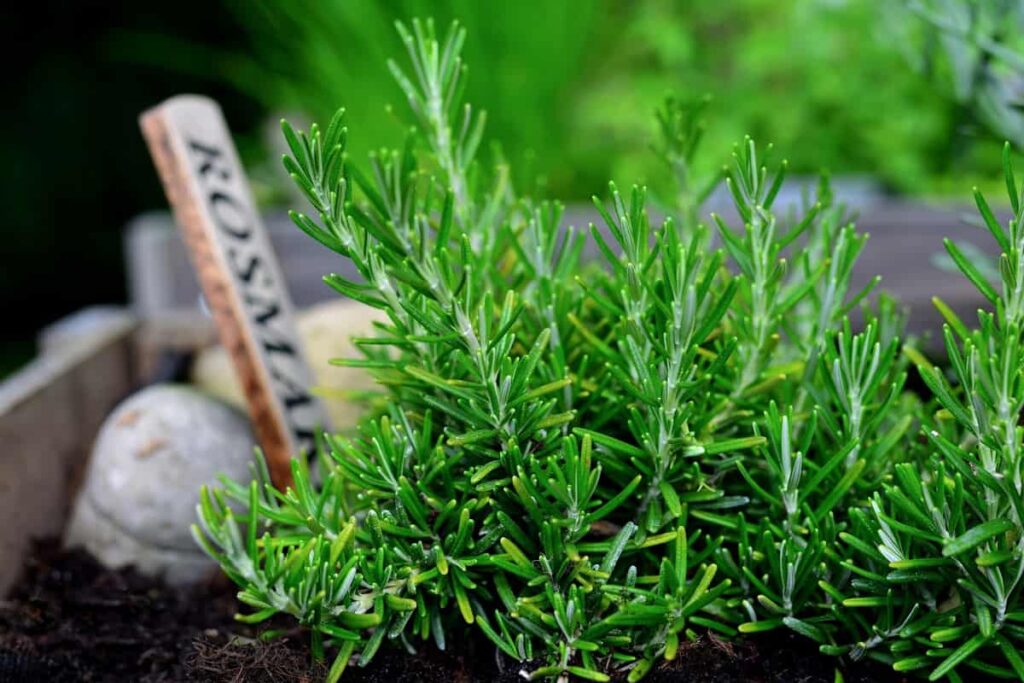
How to grow Rosemary from seed
Place the seeds in a tray filled with moist seed-starting mix and lightly cover them. Ensure the tray is covered with plastic wrap to prevent the mixture from drying. The soil should be kept between 27 to 32 °C by placing the tray on a heat mat. Once seedlings appear, remove the plastic wrap, and move the tray into a bright light spot. Seedlings should be moved to individual pots or outdoors if the weather is warm once they are about 3 inches tall.
- Light: Rosemary prefers the full sun and does not tolerate shade. On most days, it needs at least six hours of direct sunlight. Bring indoor plants outside to get natural sunlight when the weather is warm. Leggy and weak growth can be caused by inadequate light.
- Soil: Rosemary grows best in sandy or loamy soil that drains well. Heavy clay and wet soil are not ideal for growing it. The pH of the soil should be slightly acidic to neutral (6.0 to 7.0).
- Water: After they reach maturity, rosemary shrubs can tolerate drought well and should be underwatered rather than overwatered. Water the soil evenly but not soggy, allowing the top few inches to dry between waterings.
- Fertilizer: There is no need to feed Rosemary heavily. It is possible, however, to give the shrub a healthy start by mixing compost into the soil when planting. Using a balanced liquid fertilizer and following label instructions will continue to promote quality growth.
Mint
Mint is a good source of Vitamin A, manganese, folate, and iron. In addition, it improves irritable bowel syndrome and digestion. Fresh or dried, both are used in food items as garnishing. Among Indians, mint chutney is quite popular.
How to grow Mint from seed
It is recommended to grow Mint in containers to keep it contained and prevent it from spreading to other garden areas. Mint grows best in moist, well-draining soil and in a spot that is either full sun or part shade. The root system of Mint is shallow. It is best to use an unglazed clay container with drainage holes so that excess soil moisture can escape through the walls and holes. The soil should be watered but not soggy, and a good potting mix should be used. You should be aware of where you place the container since long stems could take root in the soil nearby.
- Light: Mint plants thrive best in part shade, although they are tolerant of the full sun if they are regularly watered. Even so, protecting them from the strong afternoon sun is best. Although Mint can survive in fairly shady conditions, it might be leggy and will not produce as many or as flavorful leaves.
- Soil: Despite its adaptability to most soil types, Mint prefers rich soil with good drainage. Waterlogged soil can cause the roots of mint plants to rot. pH ranges from slightly acidic to neutral.
- Water: Moisture should be kept at a light level but not soggy. About an inch below the surface of the soil, water your plant if it feels dry. The wilting foliage of your Mint typically indicates that the plant needs more moisture.
- Fertilizer: When the plants emerge in spring, fertilize them with a balanced, all-purpose fertilizer during the growing season, significantly if they are growing in nutrient-poor soil. Please follow the instructions on the label.
Tulsi
Due to the healing properties of Tulsi, the ancestors made it mandatory to plant one at home. Tulsi has been used for centuries to treat high blood pressure, headaches, colds, coughs, indigestion, sinusitis, gastric disorders, cramps, and more. Diabetes and arthritis are also believed to be treated with it.
How to grow Tulsi from seed
High-quality soil and an ordinary flower pot are all you need to grow tulsi. Gently push the seeds 1/4 inch below the soil with your fingertips after you sprinkle the tiny seeds over them. Once the seeds begin to germinate, mist them daily with water using a spray bottle filled with water.
In case you missed it: Liquid Fertilizer Guide for Plants: How to Apply, Homemade, Types, Vegetables, Herbs, Lawn, Potted Plants, and Indoors
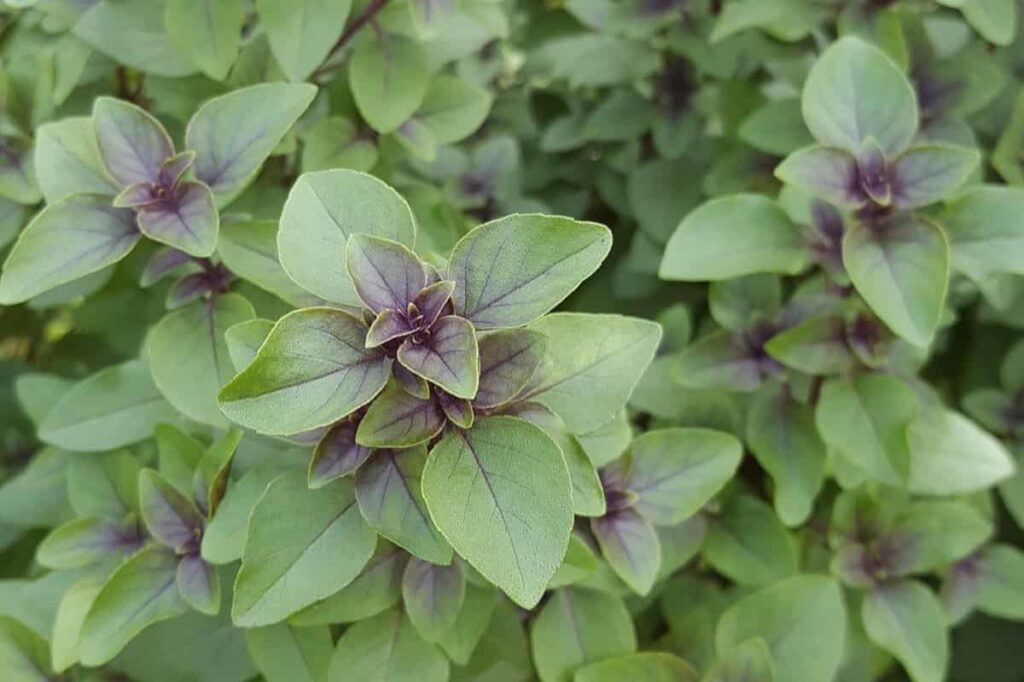
- Light: Large, healthy leaves will result from giving holy basil plenty of sunlight. The shade will not harm this plant, but anything more than dappled shade will lead to a decline.
- Soil: Even though tulsi grows well in most soils, it requires little effort to thrive. Therefore, light and airy soil, yet rich simultaneously, is ideal. The silty loam is a good choice since it retains some moisture while draining well. The best soil mix for planting tulsi in a container is three parts peat moss, each one part of part perlite and compost.
- Water: It is crucial to keep the soil moist to grow healthy and abundant holy basil without letting it become drenched and soggy. Plants grown indoors with compost or well-aged manure for outdoor conditions should follow this rule.
- Fertilizer: Nutrients are best provided to this herb by planting it in good, rich soil and enriching it with organic matter
Fenugreek, Methi
Fenugreek has been used for medicinal purposes throughout history. For example, ancient Egyptians used fenugreek seeds as a food supplement and medicine. The ancient people believed that eating fenugreek would boost their energy and improve their digestion. It is possible to germinate methi seeds in different ways. You can soak them in water for 4-5 hours first. After that, you can store seeds in an airtight container for germination.
In case you missed it: Seed Germination Chart in India: Duration and Temperature for Fruits, Vegetables, Flowers, and Herbs
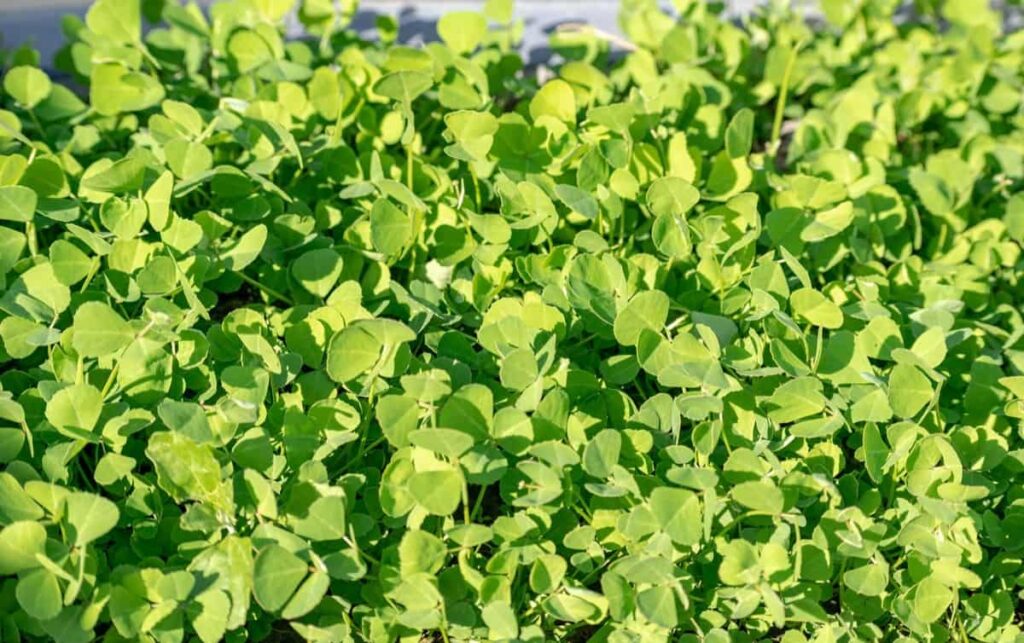
A wet cloth tied airtight can be placed over the soaked seeds to get germination within a day. Finally, you can sow seeds directly in the soil for germination. Almost any container or pot can be used to grow fenugreek. For example, plant seeds in a pot on the balcony and place them on a sunny window sill. Because this herb has shallow roots, you won’t need a deep container. Instead, choose a wide and deep planter that drains well.
- Soil: Methi grows best in fertile, well-draining soil that is less compact. For healthy plant growth, the soil pH should be neutral.
- Light: A well-lit area with at least three to four hours of direct sunlight is ideal. Healthy leaves are produced by this annual herb when it receives sunlight.
- Watering: Use a watering can to water your container every morning by using the shower method.
Mustard
Vitamins, poly nutrients, and minerals are abundant in mustard seeds. Mustard seeds are rich in selenium, which has anti-inflammatory properties. Furthermore, they contain magnesium, which reduces asthma attacks and symptoms of rheumatoid arthritis and lowers blood pressure. The body’s metabolism is boosted by mustard seeds, which are great for digestion.
How to grow mustard From seed
Seeds of black mustard can be sown directly into the soil and grown easily. However, the seeds are small, so it is often best to sow within a row, cover lightly with soil, and thin the plants once they have emerged.
- Light: Black mustard grows naturally in meadows and along the edges of tilled fields. However, shade is not a good environment for it to thrive, as it requires full sun to grow and perform at its best.
- Soil: Despite its ability to grow almost anywhere, mustard prefers moist, loamy, loose, and well-drained soil. There should be a pH range between 6 and 7 in the soil. A soil test can be conducted easily to determine the pH, and you can see how your plants are doing by watching them.
- Water: Keep your plants consistently moist without letting them sit in standing water; they will thrive. Watering shouldn’t be a problem if your soil drains well.
- Fertilizer: Depending on your soil’s richness, fertilizer may not be necessary, but manure will give your mustard an extra boost and peppy flavor.
Bayleaf
In addition to using bay leaf in tea, it makes a great cough syrup when boiled in water. Various dishes can be prepared with bay leaves crumbled and eaten. Multiple micronutrients are contained in it, including vitamins A, B6, and C, iron, manganese, and calcium.
- Light: Despite their preference for partial shade, outdoor plants can also tolerate full sun. If you live in an area with hot, dry summers, you should consider having some afternoon shade. This tree produces the best-flavored leaves if given full sun for at least a portion of the year if you plan to use the leaves as a culinary herb.
- Soil: A well-draining soil is ideal for growing this tree; it can grow in loamy, sandy, or clay soil. The plant thrives in both acidic and alkaline soils. A commercial potting mix can be used to grow container plants.
- Water: Due to its shallow roots, it might be necessary to water the bay laurel frequently during dry spells. You should water this plant regularly to keep the soil moist but not overly wet, which could cause rot.
- Fertilizer: Container-grown bay plants need to be fertilized in the spring with a balanced organic fertilizer, such as fish emulsion or kelp meal.
In case you missed it: Top 17 Herbs to Grow in Your Kitchen Garden: How to Plant and Care
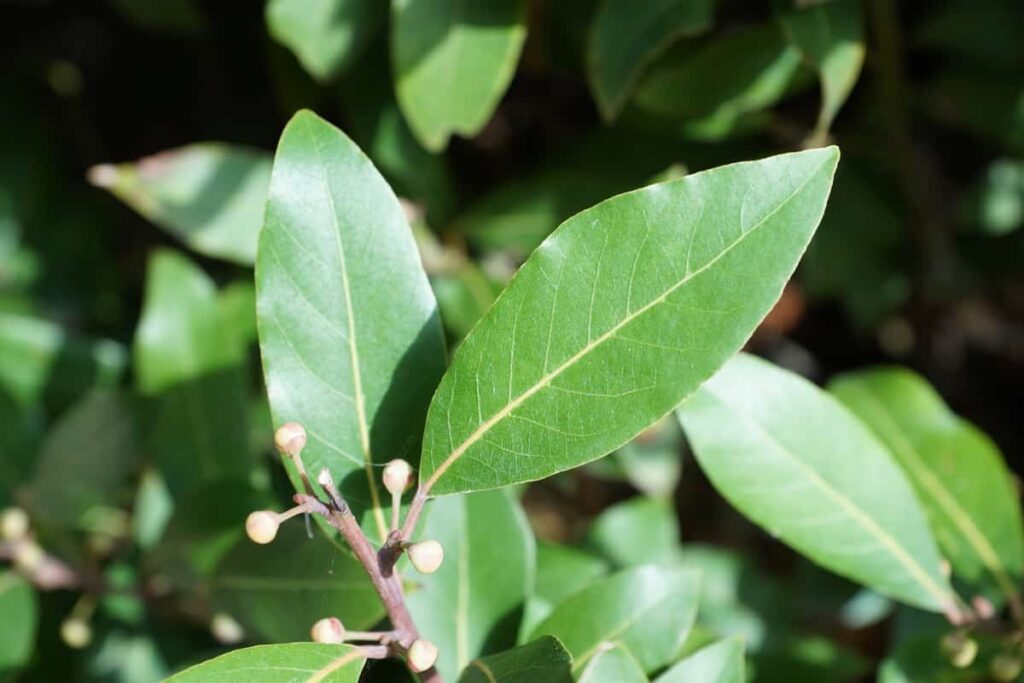
Ashwagandha
Indian ginseng, also known as Ashwagandha, is native to India. There is no doubt that it is a mighty helpful plant. Ayurveda recommends ashwagandha roots for treating anemia due to their medicinal properties. Additionally, regular use enhances vigor and immunity. Ashwagandha grows up to 3 feet tall and is a low-growing perennial. This plant has yellow-green, long, elliptical leaves.
How to grow Ashwagandha from seed
Ashwagandha seeds should be planted two centimeters deep and ten centimeters apart when the temperature is around 20°C. In two weeks, the seeds will germinate. While the seedlings are established, water them well. Plants should be thinned out after a month of growth, leaving a space of around 50 to 60 cm between them.
- Soil: Soil needs to be sandy and well-draining so that water can drain quickly. An ideal pH level is between 7.5 and 8, which is neutral to slightly alkaline
- Watering: It is important to water the plant only when it appears thirsty and in an economical manner. Drought-resistant Indian ginseng dislikes wet feet.
- Fertilizer: Due to its medicinal properties, Ashwagandha roots aren’t fertilized like ginseng. Despite this, organic fertilizers are used. Plants can be fertilized with aged manure or compost near their bases.
Conclusion
In the development of drugs, medicinal plants are considered rich sources of ingredients. Throughout the world, these plants also play a crucial role in developing human cultures. Further, some plants are considered important nutrition sources, so they are recommended for their therapeutic properties.
- Profitable Village Farming Business Ideas in 2024
- High-Yield Aquaculture: Fast-Growing Fish for Farming
- Effective Fish Pond Construction Techniques for Beginners
- Irrigation and Water Management in Pineapple Farming
- Blossom to Harvest: Mastering Flowering and Pollination in Papaya Farming
- Pig Fattening Essentials: From Selection to Sale for Beginners
- Raising Wagyu Cattle: A Complete Guide for Premium Beef Production
- Soil Types and Their Water Holding Capacity
- Optimizing Irrigation Schedules for Coconut Groves for Enhanced Yield
- Espresso Your Garden: Coffee Grounds for Healthier Acid-Loving Plants
- The Best Soil Mix for Snake Plants: How to Mix Your Own Snake Plant Soil
- Green Thumb Success: Expert Tips for Cultivating Greenhouse Beans All Year Round
- Bloom All Year Round: The Ultimate Guide to Indoor Hyacinth Care
- Eco-Friendly Gardening: How to Make Liquid Fertilizer from Kitchen Waste
- Ultimate Guide to Grow Anise in Pots: Explore Seed Propagation to Harvesting
- Guide to Raising Chester White Pigs: Discover Breed Facts to Growth Management
- Mastering the Elegance: The Ultimate Guide to Weeping Cherry Tree Care, Planting, and Maintenance
- Ultimate Guide to Planting Garlic in Grow Bags: Growing Strategies for Beginners
- How to Fix Spider Plant Leaf-Related Problems: Natural and Organic Remedies
- 10 Reasons Why Your Tulsi Plant is Shedding Leaves: Home Remedies and Solutions
- Optimizing Growth and Yield: The Advantages of Palm Bunch Ash Fertilizer
- Utilizing Neem Oil Extract as a Natural Pesticide for Hydrangea
- From Soil to Harvest: Various Ways in Which Farmers Can Use AI Tools
- Steps to Encourage and Induce Citrus Flowers: A Comprehensive Guide
- How to Fix Snake Plant Leaf-Related Issues: Natural and Organic Remedies
- Transform Your Garden into a Fragrant Oasis with Raat Ki Rani (Night Blooming Jasmine)
- Discover the Ideal Chicken Breeds for Philippine Farms
- How to Create a Poultry Egg Farm Business Plan for Profits
- Grow Lemon Cucumbers Like a Pro: Insider Techniques for Bountiful Yields
- Ultimate Guide to Caring for Your Pink Princess Philodendron: Tips for Thriving Variegation
- Areca Nut Profit Per Acre: Calculating Yield and Cost of Cultivation
- How Kaveri Chicken is Becoming a More Profitable Breed in Indian Backyards
- Transform Your Barn: 9 Steps to Convert a Horse Stall into a Chicken Coop
- Exploring Suffolk Sheep Disadvantages with Limitations and Challenges
- Guide to Solving Potted Lemon Tree Problems: How to Revive Lemon Tree in Containers
- Steps to Encourage Female Pumpkin Flowers: Best Strategies for More Flowers and High Yields
